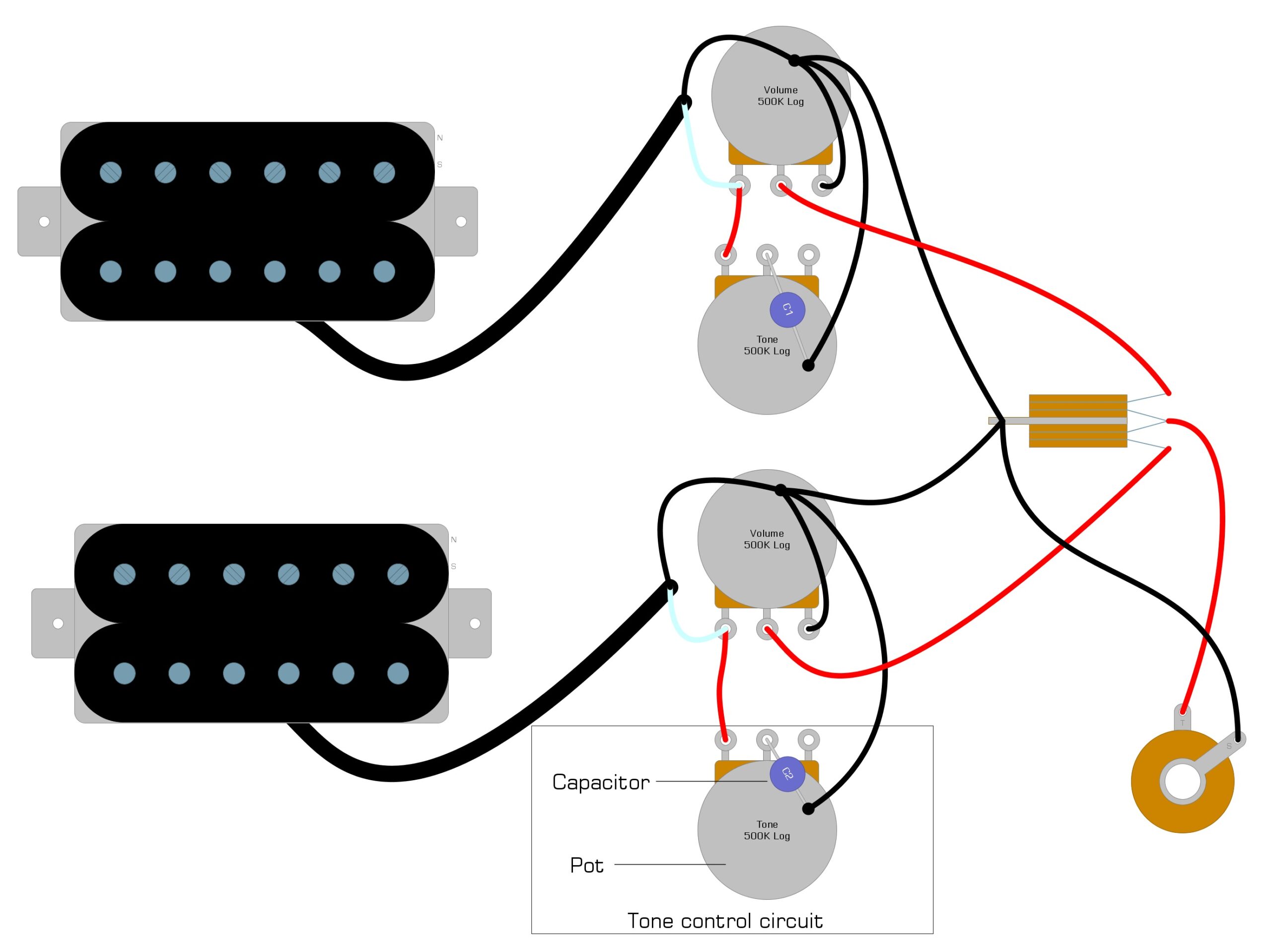
By Ed Malaker
Posted 04/05/2022
Let’s take a look at how a tone pot works. If you’re new to guitar electronics, this article will help you get a handle on this important component in your guitar circuit. We’ll explain how it works, and provide several illustrations.
What Is a Tone Pot?
A tone pot is a variable resistor that can adjust your guitar’s tone to make it sound brighter or duller. Some guitars have only one tone control, but others can have several. They are very similar to a volume control.
How Does It Work?
The tone control works by adjusting how much of your high-end frequencies escape to the ground. Like your volume control, your guitar tone pot is a variable resistor with a capacitor attached to it. The variable resistor and capacitor work together to create a low-pass filter. As you turn the tone control in a clockwise direction, you increase resistance, preventing the signal from passing through the capacitor. As you turn the tone control in a counter-clockwise direction, you reduce the resistance, allowing more signal to pass through the capacitor and eliminating the high frequencies.
What’s the Science Behind It?
There are three main ways to adjust your pickup tone using the electronics, the value of the pots, the value of the capacitor, and the taper of the pot.
Potentiometer Value
The value of the pots in your guitar will affect the tone. We usually use 250k pots with single-coils because they allow more high-end frequencies to escape. We use 500k pots with humbuckers because they have a warmer sound so we want to preserve the high frequencies. These examples show us that the higher the pot value, the brighter the tone. Unlike the capacitor value and pot taper, your choice of pot value will affect your tone at all times, even with the volume and tone pot completely open.
There are several pot values available, but the 250k and 500k are by far the most popular. The 1000k pot (1 MEG) is another popular pot value for people who want to brighten their humbucker pickups’ sound.
Capacitor Value
The capacitor value will affect how the guitar sounds when you turn the volume in a counter-clockwise direction. Vintage guitars usually used .047uf capacitors, but many guitar players felt this resulted in too warm of a tone as the years passed. Later, they switched to .033 and eventually .022 capacitors; you can find these in many modern guitars. Each capacitor resulted in a brighter tone than the one before. These values show us that the lower the capacitor value, the brighter the guitar tone. In fact, many guitarists will take it even further and use a .011uf capacitor for an even brighter tone.
You can read more about how capacitors and potentiometers interact in our article titled Capacitors vs Potentiometers.
Pot Taper
You can purchase your potentiometers with a linear or an audio taper. While this taper will not affect the tone’s brightness, it will alter how quickly the pot rolls off the high frequencies. Linear pots move directly from low to high as you turn the tone pot in a clockwise direction. Audio pots work more like your ears do. Most guitar techs use an audio taper pot for the volume pot and a linear taper for the tone control, but we recommend trying them yourself to see what sounds best for your sound.
Basic Wiring Diagram
In Example 1, we illustrate one way you can wire a tone control in your guitar.
Example 1
Summary
Your tone pot is a simple device, but it’s a great way to experiment with your guitar to modify your tone to fit your style. The parts are not expensive, so you will be able to try out several components. If we have helped you understand your tone control a little better, please feel free to share this tone pot guide on Facebook and Twitter. For more articles on guitar electronics, visit humbuckersoup.com.

